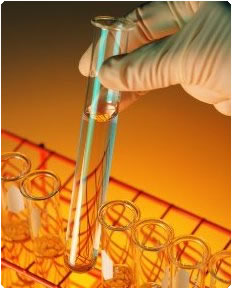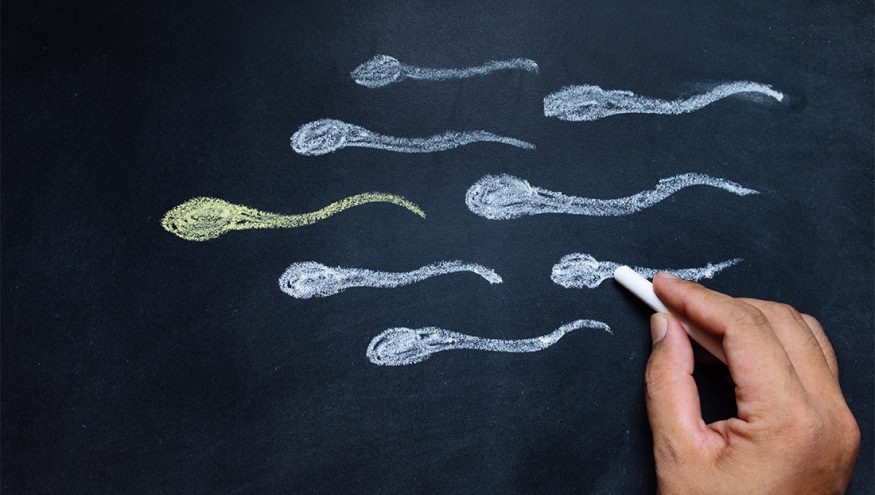What is spermiogram?
Spermiogram (sperm analysis, sperm analysis, semen analysis, semen analysis) is a test to evaluate the number, shape, movement of sperm.
(Sperm analysis, Sperm Test)

The number of sperm, the ratio of normal sperm to abnormally shaped sperm, the amount of sperm with good motility is evaluated.
In addition, the amount of semen sample, pH, color, the presence of leukocytes, the amount of fructose, properties such as liquefaction are evaluated.
The motility of the sperm is examined at certain times. Classification is made according to movement types. It is done after 2-5 days of sexual abstinence.
The sperm sample should be delivered to the laboratory within 1 hour at the latest, preferably the sperm sample should be given close to the laboratory.
For this purpose, infertility centers have allocated an area where you can give sperm samples.
Sperm assessment criteria may vary. Kruger criteria is an evaluation method which takes into account sperm deformities.
After a special staining, the sperm shape (morphology) characteristics can be examined and the fertility capacity of the sperm sample can be obtained.
According to the results of sperm analysis, at least 2 different sperm samples should be examined at intervals of 1-2 months in order to make an ideal decision.
If a fertility problem is detected in the sperm analysis, the man’s physical and hormonal examination is started. The sperm production cycle is repeated every 2-3 months. So a sperm produced will be secreted into the semen after 2-3 months.
In the same way, the harmful factors that the person encounters or the medications used for treatment can affect sperm production within 3 months.
This process should be kept in mind when evaluating semen analysis results.
Normal sperm analysis values
- Volume should be between 1.5-5.0 ml
- Ph: greater than 7.2
- Viscosity less than 2 –
- Sperm concentration more than 20 million / ml
- Motility percentage (a + b) should be more than 50%. (a: forward fast), (b: forward slow)
- Morphology more than 30% normal (WHO)
- More than 14% normal (KRUGER STRICT)
- Leukocytes should be less than 1 million / ml
Important points to consider when giving sperm analysis
- The ideal is to give sperm after a 3-4 day sexual abstinence. Keeping abstinence longer may result in a deceptively high sperm count and reduced motility. Keeping the abstinence period shorter than 3-4 days can also be deceptive, leading to a decrease in sperm count and an increase in the rate of motile sperm. Therefore, you should not have ejaculated for 3-4 days before sperm test.
- Urine must be completely flushed before giving the sperm sample.
- Before giving a sperm sample, the hands should be washed with soapy water and rinsed with plenty of water and then dried.
- Sperm sample should be given by masturbation method. No lubricants (soap, saliva, oil, petroleum jelly, etc.) or condoms should be used during this process.
- Containers where the sperm sample will be given are sterile. The inside of the container and lid must not be touched.
- All the menus coming from the penis must be given into the container. If it accidentally flows out, the officers should be informed.
- The sperm sample should be delivered to the laboratory in a way that no sunlight is seen at room temperature or body temperature within half an hour.
Terms related to sperm analysis
NORMOZOOSPERMI: Normal sperm in number, movement and shape.
ASPERMY: Ejaculate (semen) is not coming at all.
AZOOSPERMI: There is ejaculate semen, but there is no sperm in it.
OLIGOSPERMIA: It is called having less than 20 million / mL sperm.
HIGHLY OLIGOSPERMIA: less than 5 million / ml sperm.
ASTENOSPERMİ: Motility of the sperm movement is weak.
TERATOZOOSPERMI: According to Kruger criteria, it is used for sperm with normal shape sperm number below 14%.
POLİSPERMİ: Sperm number is more than 250 million.
HYPOSPERMIA: Semen volume is less than normal.
HYPERSPERMIA: Semen volume is higher than normal.
OLIGOASTENOZOOSPERMI: It is used for sperm samples which are below normal values both in terms of number and movement.
OLIGOTERATOZOOSPERMI: It is used for sperm samples that are below normal values both in number and morphological structure.
OLIGOASTENOTERATOZOOSPERMI: It is used for sperm samples which are below normal values in terms of both movement and morphological structure.


Add Your Comment